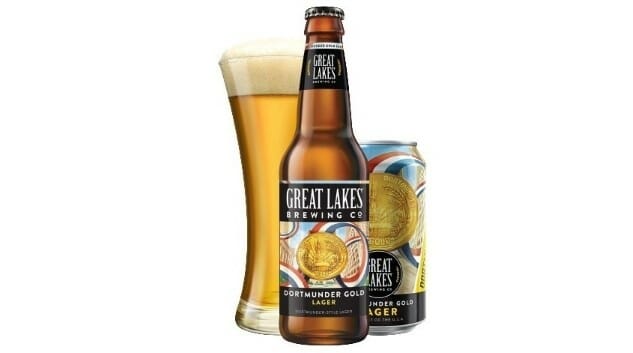My Month of Flagships: Great Lakes Brewing Co. Dortmunder Gold
Photos via Great Lakes Brewing Co.
This essay is part of a series this month, coinciding with the concept of Flagship February, wherein we intend to revisit the flagship beers of regional craft breweries, reflect on their influence within the beer scene, and assess how those beers fit into the modern beer world. Click here to see all the other entries in the series.
Looking back to my early days of craft beer imbibing, I distinctly remember a time when brewmasters used to say things like “craft breweries don’t have time to make lagers.”
Lagers, to be certain, are a considerably more onerous family of beer to produce than the arguably more forgiving world of ales. They require ample cooling for a brewery’s fermenters, and because lager yeast ferments at a slower rate, they tie up fermenters and brite tanks for longer periods of time that could otherwise be used to crank out another batch of pale ale or IPA. Most lager styles are less forgiving in terms of off-flavors and other brewing flaws, which are that much easier for the average drinker to detect when set against a more subtle, neutral background of flavor. And on a more existential level, even though a handful of lagers (such as Samuel Adams Boston Lager) were brands that led the craft beer charge in the 1980s, the craft beer space for decades defined itself in opposition to bland macro lager brands from the likes of Budweiser, Miller and Coors. For brewers who saw themselves as part of a punk uprising, “craft” lager held little appeal, and was viewed as tantamount to selling out. Then there was the economic argument: If craft breweries have to charge more for their lagers than the macro guys, will consumers really deign to buy them?
For all the reasons listed above, flagship craft lagers were something of a rare commodity in the 1980s and 1990s, but that isn’t to say they didn’t exist. At one of the Midwest’s most beloved regional breweries, in fact, it was lager that built the business: Great Lakes Brewing Co.’s Dortmunder Gold.
In production since 1988, Dortmunder Gold truly would have been a novelty in its earlier years. Most local drinkers in Cleveland had likely never sampled microbrew lager at all—assuming they’d had ANY of what we’d now call craft beer, of course—when this beer was new on the scene, and through the 2000s it still wouldn’t have had much direct style competition. It was a beer that helped prove doubters wrong about the marketability of craft lager and the willingness of consumers to pay extra for a quality product, and one might say that the current wave of drinkable mainstay lagers from the likes of Founders, Firestone Walker or Avery have their roots in Great Lakes Dortmunder Gold.
It is odd, however, to think that of all styles it was “Dortmunder export” or European-style export lager that Great Lakes used to get its message across. Ill defined and occasionally debated, Dortmunder lager has been described as the city of Dortmund, Germany’s answer to pilsner’s popularity in the Czech Republic, and it blends hallmarks of both German helles and pilsner into something that sits in a nebulous midpoint between the two. Hoppier on average than beers labeled as “helles,” but perhaps more malt-accented and a bit less bitter than true pilsners, it strikes for a balanced middle ground between the two. It may also be a bit stronger in terms of ABV—Great Lakes’ flagship clocks in at a more than respectable 5.8% ABV, suggesting that this was perhaps more of a “pint” beer than a “liter stein” beer.
It was also, I must admit, the type of beer I largely ignored during my early days of exploring the craft beer scape. Like so many other nascent beer geeks in the mid-2000s, my tastes were drawn toward the more robust and bombastic ends of the spectrum—I wanted hop bombs, Belgian oddities and dark beers rather than craft beers that reminded me in any way of the tasteless macro junk that surrounded me at college parties and backyard cookouts. Why drink something like Dortmunder Gold, I would have asked, when Great Lakes’ classic porter Edmund Fitzgerald was right there on the shelf next to it? In those days, the choice practically made itself.
-

-

-

-

-

-

-

-

-

-

-

-

-

-

-

-

-

-

-

-

-

-

-

-

-

-

-

-

-

-

-

-

-

-

-

-

-

-

-

-








































